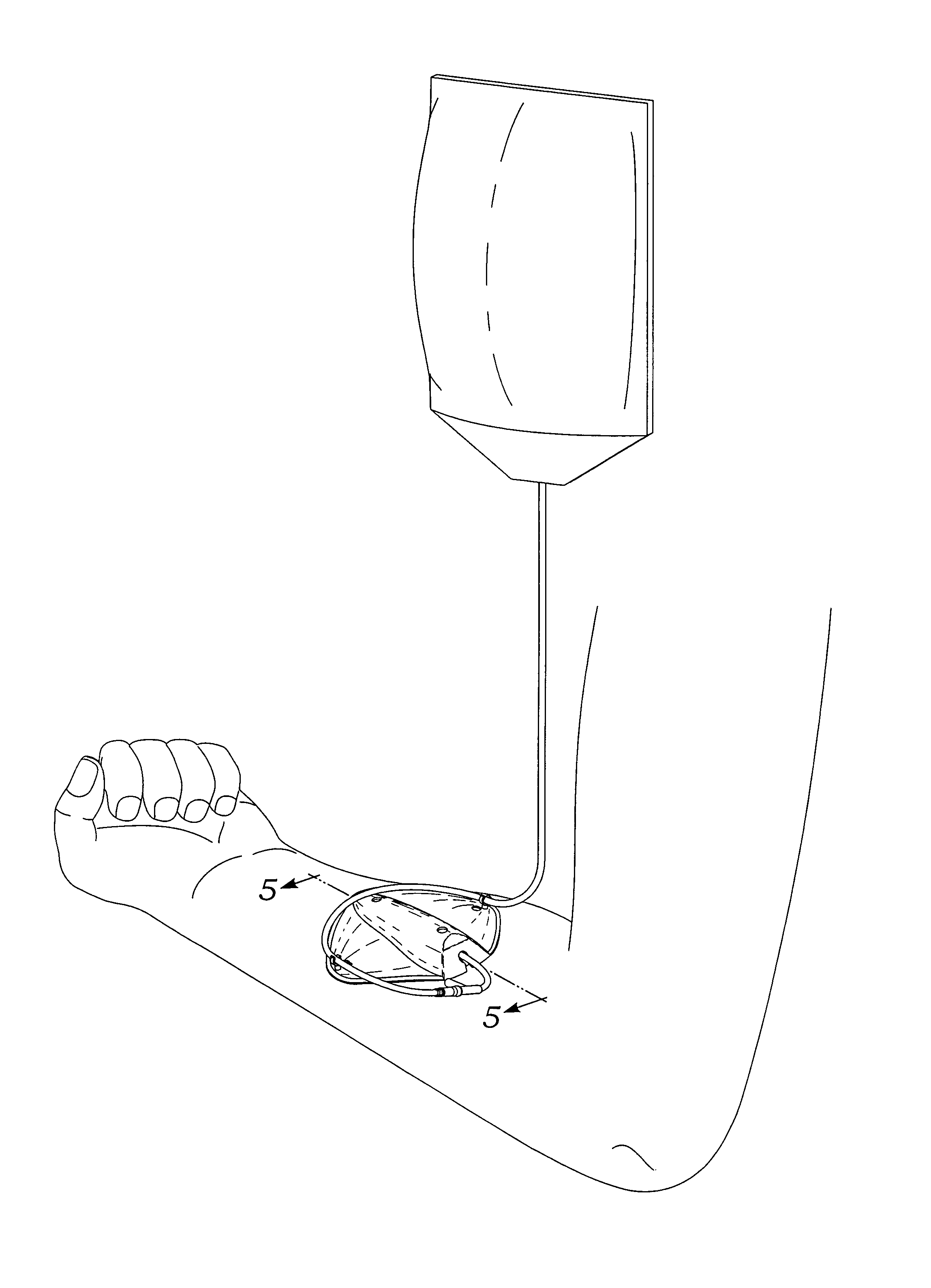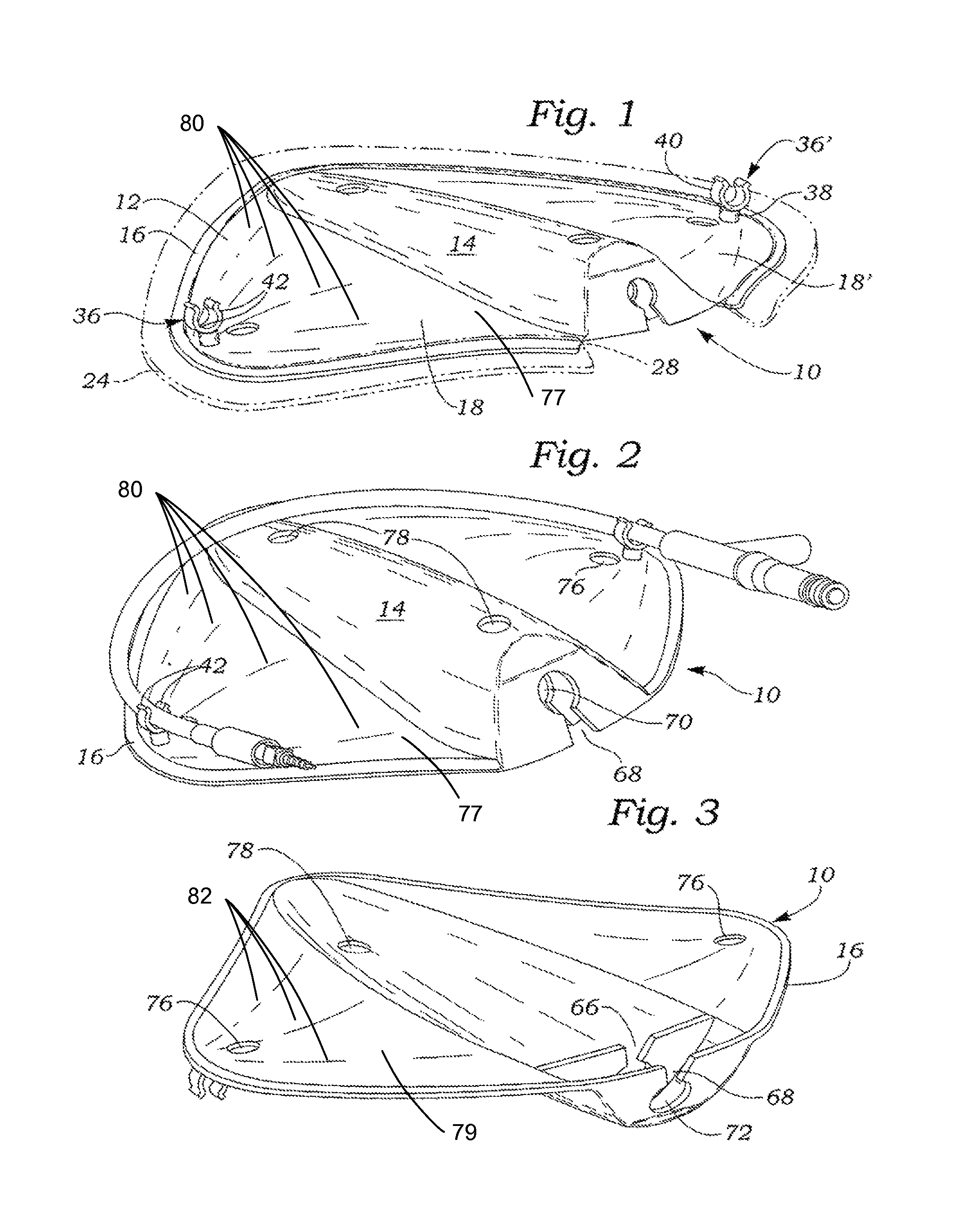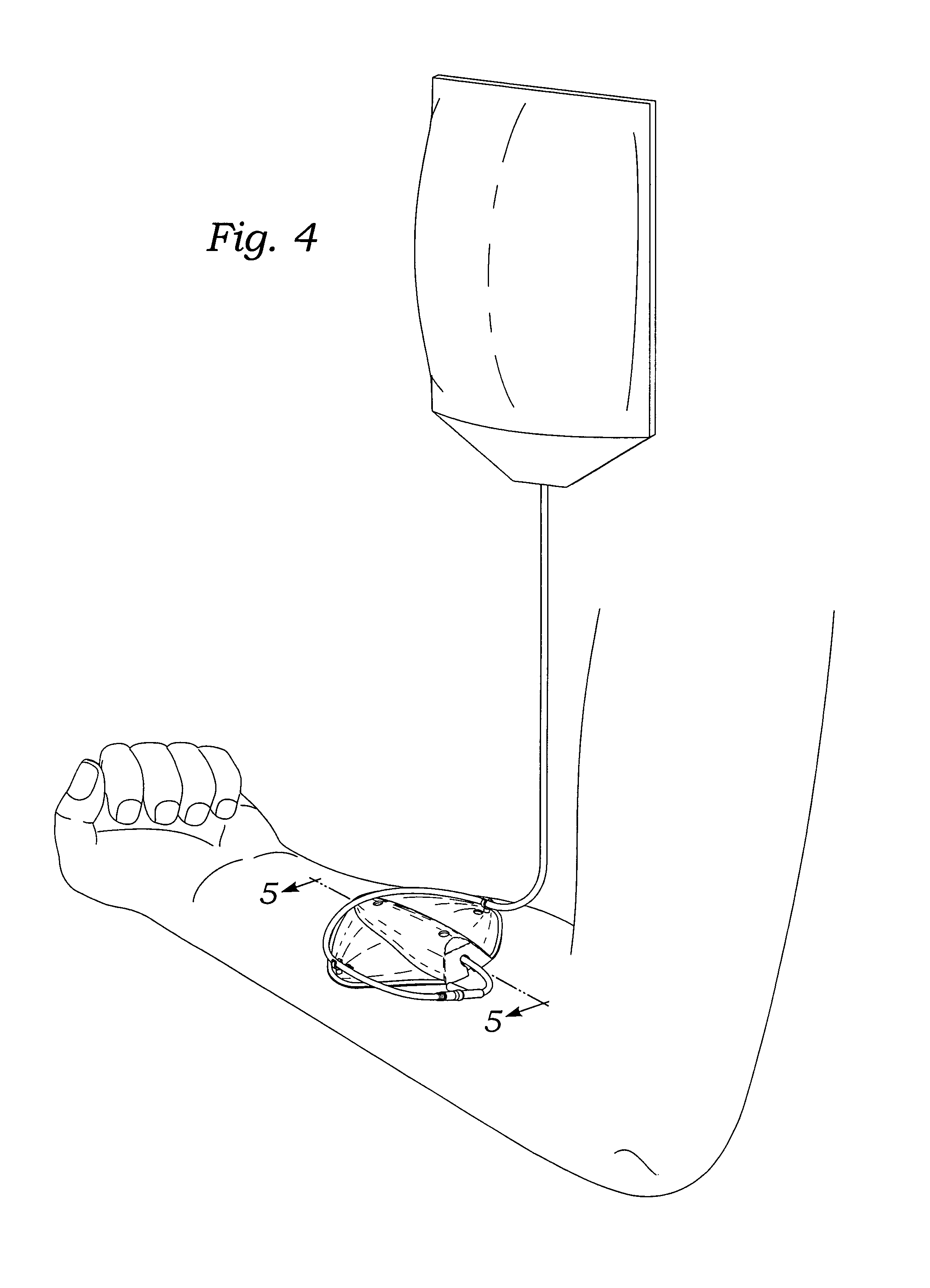Intravenous catheter protective cover
a protective cover and catheter technology, applied in the field of intravenous catheters, can solve the problems of loss of unsecured catheters, difficulty in applying sticky tape to the skin while wearing gloves, and complicated process of securing catheters, so as to avoid premature adhesion to the skin surface, maintain hygienic precautions
- Summary
- Abstract
- Description
- Claims
- Application Information
AI Technical Summary
Benefits of technology
Problems solved by technology
Method used
Image
Examples
Embodiment Construction
[0024]The following description is provided to enable any person skilled in the art to make and use the invention and sets forth the best modes contemplated by the inventor of carrying out his invention. Various modifications, however, will remain readily apparent to those skilled in the art, since the generic principles of the present invention have been defined herein specifically to provide a novel construction and method for securing a catheter at the site of insertion of the catheter needle into a patient.
[0025]Referring now to the various figures of the drawing, the shield or cover 10 of the present invention is made of non-flexible material and includes a body 12 having a central chamber 14, an edge portion 16 extending about the perimeter of the body, and side portions 18, 18′ disposed on opposite sides of the chamber 14. As shown in FIGS. 1-3, the side portions 18, 18′ each include curved upper 77 and lower surfaces 79, which are depicted by use of curved lines 80 and 82. T...
PUM
 Login to View More
Login to View More Abstract
Description
Claims
Application Information
 Login to View More
Login to View More - R&D
- Intellectual Property
- Life Sciences
- Materials
- Tech Scout
- Unparalleled Data Quality
- Higher Quality Content
- 60% Fewer Hallucinations
Browse by: Latest US Patents, China's latest patents, Technical Efficacy Thesaurus, Application Domain, Technology Topic, Popular Technical Reports.
© 2025 PatSnap. All rights reserved.Legal|Privacy policy|Modern Slavery Act Transparency Statement|Sitemap|About US| Contact US: help@patsnap.com



